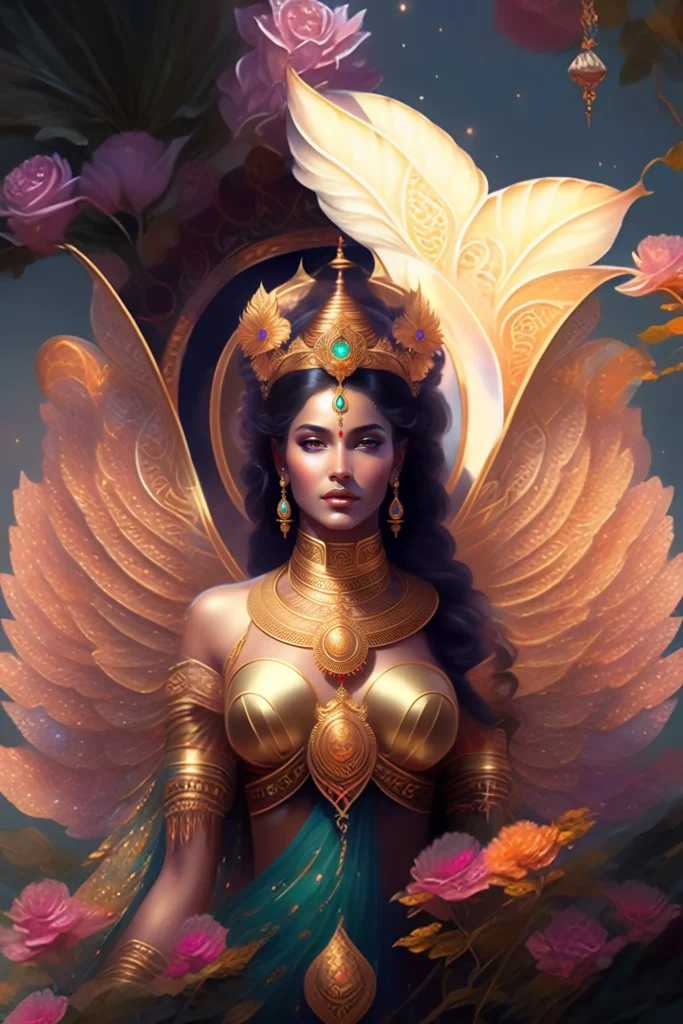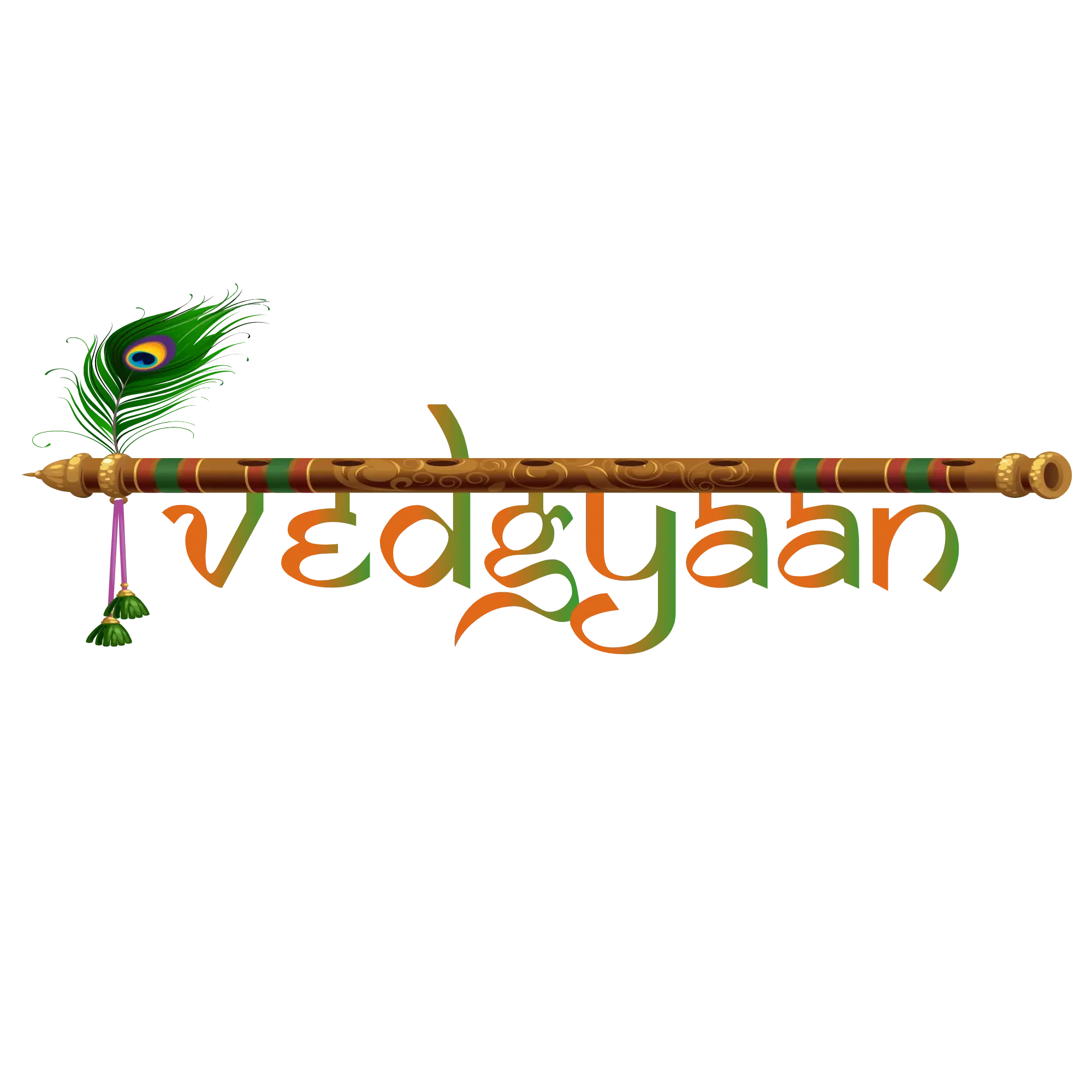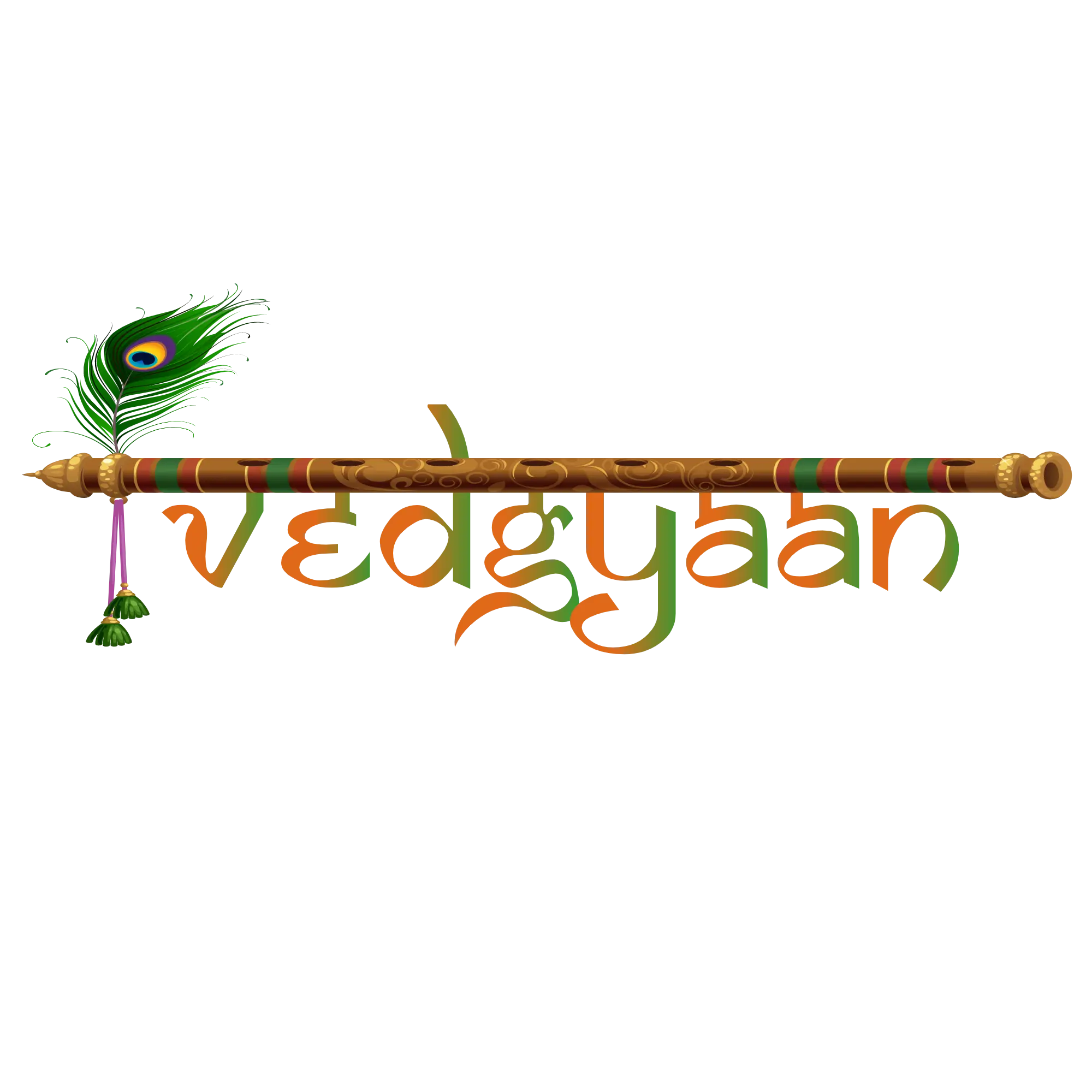As an entity older than time itself and the primordial, Shakti governs the universe as the embodiment of the Divine Feminine and the Mother of the Universe. As the source of all life and the essence of being, Shakti embodies virtuous qualities and emotions that inspire us to think beyond ourselves and extend love and compassion to others. The core of our existence and the energy within our souls, Shakti motivates us to fight for the greater good.

© Vedgyaan.com
Who Is Shakti?
Shakti (Sanskrit: Power) is an ancient and revered form of energy in Hinduism, representing the essence of the universe. This feminine energy manifests as a goddess, referred to as the Mother of the Universe and Supreme Godhead. One of its notable forms is Parvati – The goddess of agriculture, marriage, and fertility.
Shakti embodies both creative and destructive forces, defining, creating, maintaining, and destroying the universe. It is considered a female form of energy as it is the source of all life and creation, much like how women bring new life into the world.
The various forms of Shakti in the Hindu pantheon range from destructive forces like Kali to creative forces like Parvati, encompassing aspects such as death, illness, motherhood, art, dance, and music.
As the supreme power in the universe, Shakti is considered second to none, having given life to the powerful triumvirate gods – Shiva, Brahma, and Vishnu. In Hinduism, every god is imbued with a shakti, the cosmic energy that gives them extraordinary power.
Transcendent and eternal, Shakti is beyond the comprehension of mere mortals, transcending time and space. It is considered one of the most significant deities in Hinduism, revered and worshiped by millions.
Iconography: What Does Shakti Look Like?
In her manifestation as Goddess Parvati, Shakti is portrayed as a stunning and benevolent woman, overflowing with youthfulness and joy. She is commonly depicted wearing a red sari, adorned with garlands and a regal crown on her flowing, dark hair. Parvati is depicted as the Goddess Supreme, with a halo of light shining behind her head, illuminating her followers.
In contrast, Kali, another form of Shakti, is often portrayed as a fierce and bloodthirsty entity. With wild hair, dark skin, and blood-red eyes, she is depicted with an extended tongue and garland of human skulls, symbolizing her ultimate power and strength as the embodiment of Shakti. This depiction showcases the dual nature of Shakti as both a nurturing and destructive force.
Origin of Shakti
Shakti is considered the eternal and fundamental force of the universe, predating the creation of the earth and transcending its destruction. As an entity that has always existed, Shakti encompasses all existence with her divine energy.
Shakti brought the universe into being through her energy and was responsible for the creation of the triumvirate Gods – Shiva, Vishnu, and Brahma. She created Brahma to bring about creation, Vishnu to preserve it, and Shiva to bring about destruction. After the creation of the mortal world was complete, Shakti manifested her energy into her first form or incarnation – Sati, who became the soulmate of Lord Shiva.
Manifestations Of Shakti
Shakti manifests her divine energy through a multitude of powerful goddess forms, embodying both the destructive forces of rage and fear, as well as the nurturing qualities of love and compassion associated with motherhood.
- Sati
Lord Shiva’s first wife, Sati, was the embodiment of Shakti in her first incarnation as the Goddess of love and marriage. She was renowned for her immense divine power, which augmented Shiva’s own divine powers.
However, King Daksha, Sati’s father, disapproved of her marriage to Shiva and sought to destroy their relationship. To achieve this, he invited the couple to a royal ceremony with the intention of publicly humiliating them. In front of hundreds of guests, Daksha insulted and mocked Shiva, causing Sati to become incensed.
In a fit of revenge against her father, Sati took her own life by immolating herself in a fire. Her death sent Shiva into a state of profound mourning and grief that lasted for eons.
- Parvati
The embodiment of Shakti can be seen in the form of the beautiful and powerful Goddess Parvati, who represents marriage, fertility, and agriculture. She is one of the Tridevi Goddesses and the eternal consort of Lord Shiva.
Parvati is the reincarnation of Sati, Lord Shiva’s first wife. After Sati’s death, Lord Shiva withdrew into the Himalayas and engaged in deep meditation for many years. This caused great concern among the Gods as Shiva’s absence and refusal to remarry led to chaos on Earth.

(Public Domain)
In an effort to bring Lord Shiva back to life, Brahma reincarnated Sati as Parvati and strategically placed her in Shiva’s path. Despite some initial challenges in their courtship, Shiva and Parvati ultimately fell in love and were united in marriage, becoming eternally bonded.
Parvati’s ten incarnations, known as the Mahavidyas, represent various aspects of her character and range from both destructive and vengeful to benevolent and nurturing. One of the most well-known of these incarnations is Kali, the Goddess of Death and Destruction and a powerful manifestation of Shakti’s energy.
- Kali
Kali is the revered incarnation of Shakti as the Goddess of Destruction and Chief among the Mahavidyas. She is renowned for her ferocity in eliminating evil and striking down those who pose a threat to the world. Kali embodies the destructive aspect of Shakti, bringing about death to clear the way for new beginnings and renewal.
Her dark appearance and demeanor represent the transience and unpredictability of life. Despite her fearsome reputation, Kali is worshipped as the ultimate deity, transcending time and space as a timeless embodiment of Shakti’s power. As the manifestation of Shakti’s destructive power, Kali is a symbol of the cyclical nature of existence, marking the end of one era and the start of another.

(Public Domain)
Goddess Kali was born during a time when the world was in dire need of a slayer of demons and evil. With her divine origins, she was sent by the Gods with their combined powers and celestial weapons to defeat the evil demon, Raktabija. In a swift and decisive act of bravery, Kali found Raktabija, beheaded him, and drank every drop of his blood, effectively freeing the world from the tyranny of demonic forces. Her violent and fearsome appearance symbolizes her role as the ultimate destroyer of evil and defender of the innocent.
- Durga
As a powerful representation of Shakti on earth, Durga was revered as the ultimate warrior and protector of dharma. With her unwavering determination and exceptional fighting skills, she is considered one of the most prominent deities in the Hindu pantheon, revered as the embodiment of strength, power, and righteousness. Durga’s devotion to upholding dharma, no matter the cost, cemented her position as the embodiment of Shakti’s fierce and just spirit.
Shakti’s Divine Vehicle
The lion, known as the king of the jungle, is considered to be the most powerful animal in the kingdom and symbolizes raw strength and leadership, complementing Shakti’s role as the ruler of the universe. The lion also represents courage and ferocity, dominating its prey with ease and great strength, exemplifying the characters of Kali and Durga.

(Public Domain)
The divine vehicle of Shakti, ranging from Parvati to Kali, is portrayed riding on a lion, fitting for the supreme power that is Shakti. The lion Vahana symbolizes the spiritual connection between the rider and the vehicle, serving as a testament to the rider’s power and influence.
According to legend, Goddess Parvati was destined to adopt a lion as her Vahana, her strongest companion, who came to be known as “Som Nandi.” This complemented Lord Shiva’s divine vehicle, Nandi the bull. The pairing of the lion and bull highlights the complementary nature of the two divine beings and their vehicles.
Shakti And Shiva
Together, Lord Shiva and Shakti embody the dynamic forces of life and creation, with Lord Shiva representing the still and eternal aspect, and Shakti embodying the dynamic and powerful energy. Shakti is the physical manifestation of Lord Shiva’s power and an integral part of his being.

(Public Domain)
The representation of the divine union between Lord Shiva and Shakti can be seen in depictions such as Kali standing on Lord Shiva’s chest, showcasing the balance and harmony between the two. This symbiotic relationship is evident in their complementary roles, where Parvati tempers Lord Shiva’s violent outbursts, while Lord Shiva calms down Kali’s rage. This balance is a testament to the interdependence of their qualities, each elevating the other to create a powerful and harmonious duo.
“Shiva and Shakti are indistinguishable. They are one. They are the universe. Shiva isn’t masculine. Shakti isn’t feminine. At the core of their mutual penetration, the supreme consciousness opens.”
Shakti’s Significance In Hinduism
As the Supreme Godhead, Originator of life, and source of ultimate power, Shakti and her manifestations are considered to be the most significant and widely revered of the Hindu Pantheon. Boasting a plethora of devoted followers, Shakti is worshipped by a vast array of sects within Hinduism.
Shaivism
Shaivism is a special sect within the Hindu religion that worships Lord Shiva as the Supreme being of the Universe. In Shaivism, Shakti is considered Shiva’s eternal companion and another half.
According to the Shaivism texts, Shakti manifested herself as ‘Parama Prakriti’ at the beginning of the Universe. In the ‘Linga Purana’, Shakti is said to propagate evolution and life during every cycle of the Universe by uniting Parvati and Shiva in every single cycle.
Shaktism
Shaktism, a sect within Hinduism, worships Shakti as the supreme and ultimate deity. Believers hold that Shakti is the source of all creation, including the holy trinity of Vishnu, Shiva, and Brahma.
As per Shaktism, it is said that before taking the form of Parvathi, Shakti appeared to King Himavan of the Himalayas and imparted infinite knowledge to him. She described herself as eternal and transcendent, with no beginning or end, as stated in the Vedas.
Shakti then revealed her rarely seen form to King Himavan: the realm of truth (Satyaloka) was etched onto her forehead, her hair contained the entire universe, her eyes held the sun and moon, her tongue narrated the Vedas, and her teeth symbolized death, heat, and emotions.
Shakti is also described to have made the Triumvirate before the creation of the universe. In the Srimad Devi Bhagwat Puranas, Shakti declared to the male gods –
“I am the ruler and originator of this Universe. I am the feminine form of ultimate reality while you are the male form. I am eternal limitless energy, and the power of the Gods flow through my veins”.
According to the teachings of Shaktism, Shakti created the trinity of Brahma, Vishnu, and Shiva, with Lord Shiva being considered the most powerful of all and the consort of her various incarnations, as well as the personification of time. It is believed that all humans, knowingly or unknowingly, worship Shakti as she is the essence of the universe. Channeling one’s energy in any aspect of life, be it through meditation, prayer, or following the path of Dharma, is considered a form of worship to the devotees of Shaktism.
Celebrating Shakti
Shakti is a universal energy force and Devotees all over the world celebrate her and the manifestations of her energy on an auspicious occasion of Navaratri for her blessings and seek her Protection.
Navaratri is one of the greatest Hindu Festivals, celebrated over nine days. During Navratri, the nine different forms of Durga are worshipped over the 9 days with a series of pujas and austerities during the festival.
Conclusions:
Shakti, as depicted in Hinduism, is a divine force that is worshipped as the supreme power and energy of the universe. From her manifestation as Parvati to her representation as Kali, Shakti is often depicted riding on a lion, symbolizing her immense strength and power. Her relationship with Lord Shiva is considered to be highly symbiotic, where each complements the other and exemplifies the best qualities of one another. Shaktism, a sect within Hinduism, worships Shakti as the only Supreme Godhead, and devotees believe that she is the originator of all life, including the triumvirate gods – Vishnu, Shiva, and Brahma. Through meditation, prayer, or following the path of righteousness, devotees believe that all humans worship Shakti, who is the essence of the universe and the source of all energy.


